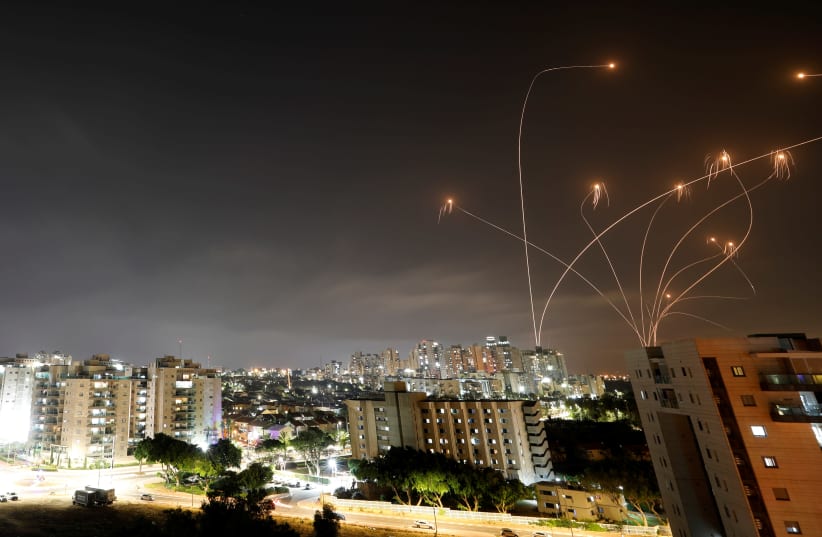Iron Dome always had a weakness.
It shot down 85%-90% of Hamas rockets in past rounds of battle – and that was out of the ones which were projected to land in populated areas.
As long as the volume of rockets Hamas could shoot in a single salvo was small, this was almost a hermetic defense.
But Israeli intelligence and national security officials had long warned that Hezbollah had a sufficient number of rockets to pound the Jewish state with over 1,000 rockets in a day, an amount that could pierce the Iron Dome shield.
This was one reason the IDF has been so careful when it came to Hezbollah.
The terror group has 150,000 or more rockets, including hundreds of advanced ones, which means that 1,000 per day wouldn’t even dent its arsenal.
Has Hamas now found its own way to undermine Iron Dome?
During the 2014 Gaza War, Hamas fired almost 4,000 rockets, but that was spread out over 50 days. It usually fired dozens of rockets in a day at most, and spread them out over the day. Its high was around 200 rockets spread over a whole day – and out of the 50 days of the war, it fired more than 100 rockets per day for only around two weeks.
Also, the vast majority of these rockets were fired at the Gaza corridor since Hamas had a limited number of rockets capable of reaching Tel Aviv and other areas.
But on Tuesday and Wednesday morning, Hamas appeared to succeed in firing more than 100 rockets within minutes, including a sizable number focused on Tel Aviv.
This is a jump both in the number of rockets being used against Tel Aviv, and in the terrorist group’s ability to fire a high volume of rockets simultaneously.
This is an ability that Hezbollah was known to have, but was thought to be some time away still for Hamas.
DOES THIS mean the Iron Dome is no longer effective? No.
It still intercepts the majority of rockets fired at Israeli population centers although some are getting through. The bigger question is whether Israeli intelligence estimates are correct that Hamas has only a few hundred missiles which can reach Tel Aviv.
If those estimates are accurate, then Hamas may have used up a large chunk of that arsenal, even if it has thousands more which can hit Beersheba, Ashdod and communities near the Gaza border.
But if Hamas has more of those longer-range rockets, this could impact Israel’s plans for this round of violence and especially the question of how long it wants it to last.
If Hamas can pierce the missile shield with 100 rockets in a few minutes twice in one day, how much more damage can Hezbollah and Iran do with the longer, larger and more accurate missiles it possesses?
Israeli decision-makers and military strategists will need to take this into account in deciding how long this can go on for and how quickly they will need to either escalate with a ground offensive to reduce Hamas rocket fire (clearly the IDF’s extensive bombing on Tuesday did not succeed in that sufficiently) or to find its way to a ceasefire more quickly and make new plans for the next round.
The IDF will also need to rethink the speed with which it will need to move in a conflict with Hezbollah, let alone Iran.
